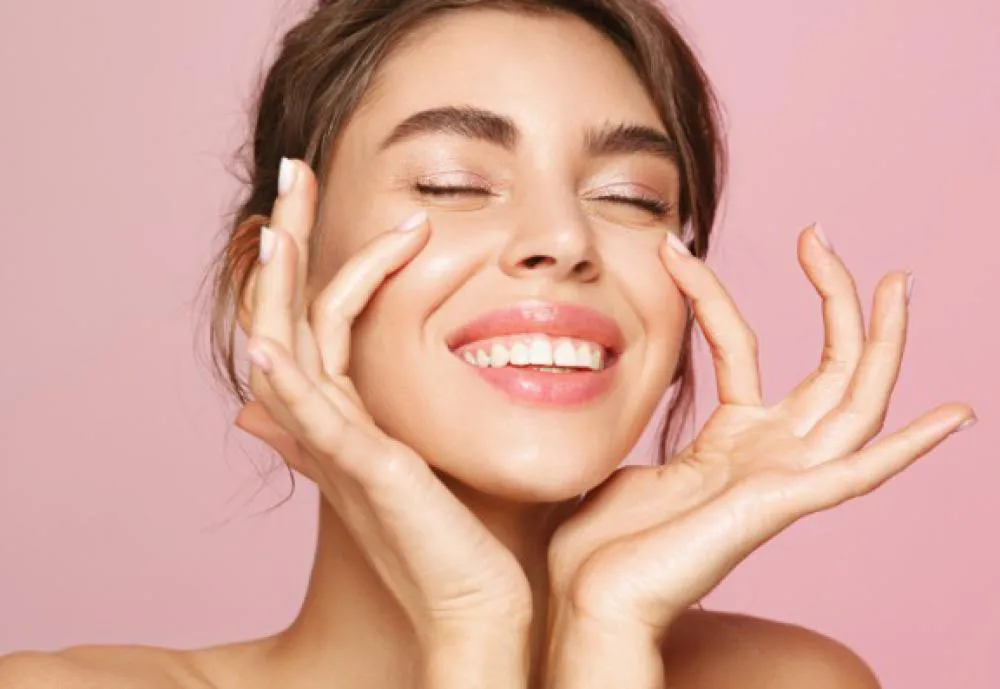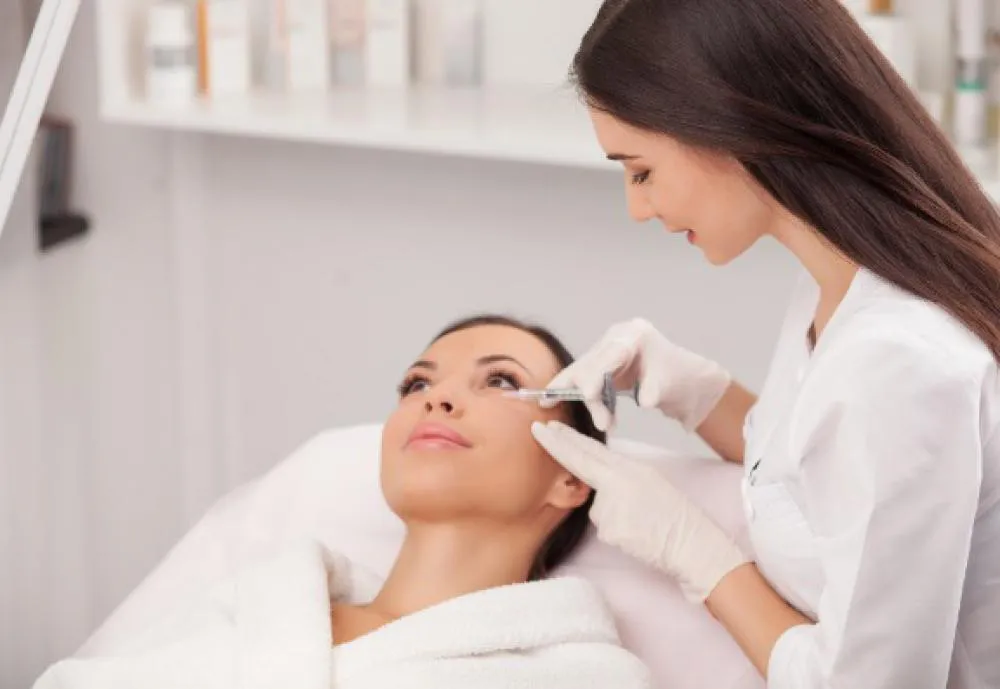Have you ever found yourself gazing at the mirror, tracing the delicate lines etched around your eyes, known as crow's feet? These fine lines are not just markers of our smiles and emotions but also a natural part of ageing. However, for many, they are the first signs of age that one wishes to address.
Enter Botox, a renowned ally in the quest for maintaining a youthful appearance. This guide dives deep into how Botox helps smooth away crow's feet, offering a beacon of hope for those looking to turn back the clock slightly on their facial features.
In our journey today, we’ll explore the essence of crow's feet, unravel the workings of Botox, and discuss everything from the right time to consider this treatment to how to choose the best practitioner. Whether you’re a newcomer to the world of cosmetic treatments or considering a fresh treatment plan, this guide promises to arm you with the knowledge you need to make informed decisions about enhancing your natural beauty with Botox.
Quick Summary
- Botox effectively smoothens crow’s feet.
- Suitable for individuals noticing early signs of ageing around the eyes.
- Treatment involves minimal discomfort and short procedure time.
- Regular top-ups are necessary to maintain results.
- Always choose a qualified practitioner for safe and effective treatment.
For more detailed information, please see below.

What are Crow's Feet?
Crow's feet, those fan-like formations that branch out from the corners of our eyes, are more than just symbols of age or expressions of joy. They represent the dynamic history of our emotions, having deepened with every smile and every squint against the sunlight. But what exactly causes these distinctive lines to form as we age?
The Science Behind the Lines
- Skin Structure Changes: As we age, our skin loses collagen and elastin, the proteins that give it firmness and elasticity. This loss makes the skin more susceptible to wrinkling and folding, particularly around the eyes, where the skin is thinnest.
- Facial Movements: Repeated facial expressions, such as smiling or squinting, cause the muscles around the eyes to contract, forming temporary lines that eventually become permanent as the skin ages.
- Sun Exposure: Ultraviolet (UV) light speeds up the ageing process, breaking down collagen faster and contributing more significantly to the appearance of crow's feet.
- Lifestyle Factors: Smoking and poor dietary habits can accelerate the degradation of skin health, further contributing to the development of wrinkles.
Genetic Influence
- While lifestyle and environmental factors play significant roles, genetics also dictate how our skin ages. Some may notice crow's feet earlier than others, largely due to hereditary factors.
Understanding these causes helps us appreciate why crow's feet are not just marks of age but badges of a life fully expressed. With this foundation, we can better comprehend how treatments like Botox target these fine lines effectively.
Causes of Crow's Feet
Understanding why crow's feet appear is essential for anyone looking to prevent or treat them effectively. While we often attribute these lines to ageing, the story behind them involves a blend of biological processes and environmental impacts.
A Closer Look at Contributing Factors
- Ageing Process: As we age, our skin naturally loses its elasticity and moisture due to decreases in collagen and elastin. This intrinsic ageing process makes the delicate eye area particularly prone to forming lines and wrinkles.
- Sun Exposure: The harmful UV rays from the sun penetrate the skin, accelerating the breakdown of collagen and leading to premature skin ageing. Frequent sun exposure without adequate protection can significantly contribute to the appearance of crow's feet.
- Facial Expressions: Every smile, frown, or squint causes the muscles around our eyes to contract, folding the skin. Over time, these repetitive motions etch lines into the area, transforming temporary expressions into permanent features.
- Lifestyle Choices: Smoking and lack of sleep can exacerbate the formation of crow's feet by affecting skin health and collagen production. Nutrition also plays a role; diets rich in antioxidants can help counteract damage.
- Genetic Factors: Genetics also determine skin structure and how it ages. If your family members developed crow's feet early, you might have a similar experience.
With a comprehensive understanding of what causes crow's feet, we are better equipped to consider how treatments like Botox can effectively minimize their appearance. This knowledge also helps in making lifestyle adjustments to delay their onset.
Understanding Botox and Its Mechanism
Botox is more than just a buzzword in beauty circles; it's a scientifically backed treatment that has revolutionised the approach to managing signs of ageing such as crow's feet. Let's explain how this treatment works and why it's so effective in softening those pesky lines around our eyes.
The Science of Botox
- Botulinum Toxin: Botox is a purified form of botulinum toxin, a neurotoxin produced by the bacterium Clostridium botulinum. This toxin is extremely safe and effective for cosmetic use in small, controlled doses.
- Mechanism of Action: When injected, Botox temporarily paralyses the muscles that contribute to wrinkle formation. It blocks the release of a neurotransmitter called acetylcholine, which is necessary for muscles to contract. As a result, muscle relaxation leads to a reduction in the appearance of wrinkles.
- Focus on Crow's Feet: Botox is injected into the orbicularis oculi, the muscle that frames the eye, specifically for crow's feet. This targeted application helps smooth out the lines that appear during facial expressions, such as smiling or squinting.
Safety and Efficacy
- Clinical Backing: Numerous studies have validated the safety and effectiveness of Botox in cosmetic applications. It's one of the most extensively studied aesthetic treatments available today.
- Temporary Results: Botox's effects are not permanent, lasting typically 3 to 6 months. This temporary nature allows for adjustments as needed during follow-up treatments.
Treatment Experience
- Procedure Time: The actual injection process is quick, generally taking no more than 10 minutes.
- Minimal Discomfort: Botox injections involve minimal discomfort, often described as a mild pinch or sting at the injection site.
- No Downtime: Patients can resume normal activities immediately after the procedure, making it a convenient option for those with busy lifestyles.
Understanding these mechanisms helps demystify Botox and illustrates why it's a preferred choice for those looking to diminish the visibility of crow's feet without undergoing more invasive procedures.
The Best Time to Start Botox for Crow’s Feet
Deciding when to begin Botox treatments for crow's feet is crucial for achieving the best results and maintaining a natural look. Let's consider the factors that influence the ideal timing for starting Botox.
Early Intervention vs. Later Treatment
- Preventative Measures: Starting Botox treatments at the first signs of fine lines - often in one's late 20s to early 30s—can prevent deeper lines from forming.
- Treatment for Established Lines: Botox can still be effective for those with pronounced crow's feet. The goal here is more about improvement and maintenance rather than prevention.
Factors to Consider
- Skin Condition: The state of your skin and the depth of the wrinkles will influence the effectiveness of Botox. Earlier lines tend to respond better to treatment.
- Personal Goals: Your aesthetic goals play a significant role. Some may prefer to address the signs of ageing as they appear, while others might wait until the lines are more noticeable.
- Lifestyle: Sun exposure, smoking, and diet can accelerate the ageing process. Those with significant lifestyle factors contributing to skin ageing might consider starting Botox earlier.
Consultation with a Specialist
- Before deciding on the timing, it's vital to consult with a dermatologist or cosmetic specialist. They can assess your skin's condition and recommend the best course of action based on your unique facial structure and skin type.
Choosing the right time to start Botox can greatly affect the treatment's success and satisfaction with the results. Starting earlier might help maintain a youthful appearance for longer, while later treatments can still significantly reduce the visibility of existing lines.
Procedure Overview
Embarking on a Botox treatment for crow's feet is straightforward and efficient. This section outlines what you can expect during the procedure, ensuring you walk into your appointment feeling prepared and confident.
Steps of the Botox Injection Process
- Consultation: Initially, you'll have a consultation where your practitioner will assess your facial structure and discuss your aesthetic goals. This step is crucial for a tailored treatment plan.
- Preparation: The area around your eyes will be cleaned, and a topical anaesthetic may be applied to minimize discomfort.
- Injection: Botox is injected into specific points around the eye area using a fine needle. The number of injections depends on the extent of the wrinkles and your desired results.
- Duration: The entire procedure typically takes about 10 to 15 minutes.

What to Expect During the Procedure
- Discomfort Level: Most patients report minimal discomfort, likening the sensation to a quick pinch or sting.
- Immediate Aftercare: You can return to your daily activities immediately. However, it is advised that you avoid rubbing the treated area and not engage in strenuous activities for the rest of the day.
Follow-up
- Results Visibility: Initial effects are usually seen within a few days, with full results appearing within two weeks.
- Maintenance: To maintain a smooth appearance, follow-up treatments are typically needed every 3 to 6 months.
This efficient, minimally invasive procedure allows for quick cosmetic enhancements with minimal downtime, making it an ideal choice for those with busy lifestyles seeking to reduce the appearance of crow's feet.
Aftercare and Side Effects
Proper aftercare following Botox injections is crucial for maximising treatment benefits and minimising potential side effects. Here's what you need to know to ensure a smooth recovery and maintain the best possible results.
Post-Treatment Care
- Avoid Touching or Rubbing: Do not rub or massage the treated areas for at least 24 hours to prevent the toxin from spreading to unintended muscles.
- Stay Upright: Remain upright for several hours post-treatment; avoid bending over or lying down immediately after the procedure to keep the Botox in place.
- Skip Strenuous Activities: Avoid heavy physical activity for the first day to reduce the risk of bruising and ensure the Botox settles properly.
Managing Side Effects
- Common Reactions: Most side effects are mild and temporary, including slight bruising, redness, or swelling at the injection site. These typically resolve within a few hours to days.
- Rare Complications: Although uncommon, notify your practitioner if you experience symptoms like difficulty swallowing, vision problems, or signs of an allergic reaction.
Follow-Up Care
- Monitoring Results: Monitor the effects of Botox as it begins to work. They are typically noticeable within a few days and full results in two weeks.
- Scheduled Re-Treatments: Since Botox effects are temporary, planning for touch-ups every 3 to 6 months can help maintain a consistent look.
By following these aftercare guidelines and monitoring for any unusual side effects, you can enjoy Botox's rejuvenating effects safely and effectively.
Cost Considerations
The financial aspect of Botox treatments is an important factor to consider. Here, we will explore the typical costs associated with Botox for crow's feet and factors that can influence the overall pricing.
Understanding Botox Costs
- Average Pricing: The cost of Botox can vary widely based on geographical location, the expertise of the practitioner, and the amount of product used. Generally, treatments for crow's feet might range from £200 to £400 per session.
- Per Unit Pricing: Many clinics charge by the unit of Botox used, which allows for precise billing based on the amount of product necessary for your specific case.
Factors Affecting Cost
- Clinic Location: Urban centres often have higher pricing due to increased overhead costs.
- Practitioner Expertise: Highly experienced practitioners typically charge more, reflecting their expertise and the demand for their services.
- Frequency of Treatment: Since Botox is a temporary solution, consider the long-term cost of ongoing treatments to maintain results.
Budgeting for Treatment
- Insurance and Healthcare Plans: It’s worth noting that most insurance plans do not cover cosmetic procedures like Botox unless there's a medical necessity.
- Saving Plans and Packages: Some clinics offer packages or membership plans that can reduce the cost per session.
Understanding these cost elements will help you budget for your Botox treatments effectively, ensuring you can manage the expenses without compromising quality and safety.
Choosing the Right Practitioner
Selecting a qualified practitioner for Botox injections is critical to ensure safety, effectiveness, and satisfaction with your results. Here’s what to consider when choosing the right specialist for your Botox treatment.
Qualifications and Experience
- Certifications: Ensure the practitioner is properly certified in cosmetic procedures. Look for qualifications from reputable medical boards or cosmetic surgery organisations.
- Experience with Botox: Prefer practitioners who specialise in Botox and have a track record of successful treatments, particularly around the eye area.
Consultation Process
- Initial Consultation: A good practitioner will offer a thorough consultation to discuss your concerns, desired outcomes, and any potential risks associated with the treatment.
- Customised Approach: Choose someone who provides a tailored approach, taking into account your unique facial features and aesthetic goals.
Clinic Reputation
- Reviews and Testimonials: Check reviews and patient testimonials to gauge previous clients' satisfaction.
- Before and After Photos: Ask for before and after photos of previous patients to assess the quality of the practitioner's work.
Professionalism and Safety
- Clean and Safe Environment: The clinic should adhere to the highest cleanliness and safety standards.
- Transparent Communication: The practitioner should be willing to answer all your questions and provide clear, honest information about the procedure, including potential side effects.
Choosing the right practitioner is as important as the treatment itself. A skilled and experienced professional can significantly enhance your overall experience and outcomes with Botox.
Alternatives to Botox
While Botox is a popular choice for treating crow's feet, various other options can also help reduce the appearance of these fine lines. Exploring alternatives is beneficial for those who may want non-invasive treatments or are looking for something different.
Topical Treatments
- Retinoids: These vitamin A derivatives stimulate collagen production and can gradually smooth fine lines.
- Peptides: Creams containing peptides may also help boost collagen and elastin production.
Other Injectable Treatments
- Dermal Fillers: These can fill deeper creases that Botox can't smooth out.
- Dysport and Xeomin: Similar to Botox, these are other types of botulinum toxin injections.
Laser and Light-Based Treatments
- Fractional Laser Resurfacing: This method stimulates the skin's healing processes to increase collagen production.
- Intense Pulsed Light (IPL): IPL can improve skin texture and tone, though it's more about skin quality than direct line treatment.
Lifestyle Adjustments
- Skincare Routine: Implementing a daily skincare routine that includes moisturisation and sun protection can help prevent further damage.
- Healthy Living: A balanced diet, adequate hydration, and avoiding smoking can all contribute to healthier skin.
These alternatives offer a range of possibilities depending on your specific skin needs, preferences, and lifestyle.
Patient Stories and Real Experiences
Hearing from individuals who have undergone Botox treatments for crow's feet can provide invaluable insights and help set realistic expectations. Here's a compilation of common experiences shared by patients:
Positive Outcomes
- Visual Improvement: Many patients report a significant reduction in the appearance of crow's feet, leading to a more youthful and refreshed look.
- Boost in Confidence: The aesthetic improvements often translate to enhanced self-esteem and confidence.
Treatment Experiences
- Minimal Discomfort: Most people find the procedure to be quick and relatively painless, comparing it to a light pinch.
- Quick Results: Patients typically observe visible improvements within a few days after the treatment, with full results manifesting within two weeks.
Long-Term Satisfaction
- Regular Maintenance: Those who continue with regular follow-ups often express high satisfaction with their ability to manage the signs of ageing effectively.
- Professional Dependence: The choice of practitioner is crucial; experiences tend to be more positive when treatments are administered by skilled and experienced professionals.
These stories underline the importance of expectations, the choice of practitioner, and the commitment to maintenance in influencing the overall satisfaction with Botox for crow's feet.
Conclusion
Botox remains a compelling choice for those seeking to diminish the appearance of crow's feet, blending efficacy with minimal invasiveness. This guide has journeyed through the causes of crow's feet, the specifics of Botox treatment, its procedural simplicity, and the critical importance of selecting the right practitioner. By considering the alternatives and understanding the maintenance required, individuals can make informed decisions that align with their aesthetic goals and lifestyle preferences. Whether you're contemplating your first treatment or maintaining results, Botox offers a viable pathway to rejuvenating your eyes and enhancing your confidence.
Book Your Botox Consultation Today
As you will have learnt, Botox is a great tool to help you look younger and fresher. It’s important that you get treated by an experienced, medically trained, and qualified practitioner who will inject you safely.
As always, if you have any questions you can use our Botox Q&A where you can ask for more advice direct from a trusted, experienced medical practitioner.

Author: Anna Kremerov
Mrs Anna Kremerov is an award-winning Nurse Practitioner known for Aesthetic Medicine and non-surgical procedures. She is the Founder of Anna Medical Aesthetics, the only CQC registered aesthetic medical practice in Swindon and a MaiLi Centre of Excellence for the South West of England.
Anna and her team have built up an impeccable reputation with over a hundred 5-star patient reviews on Google and Trustpilot.
Anna has over 22 years of combined medical experience in Intensive Care, Woman Health, Primary Care and Aesthetics Medicine.


